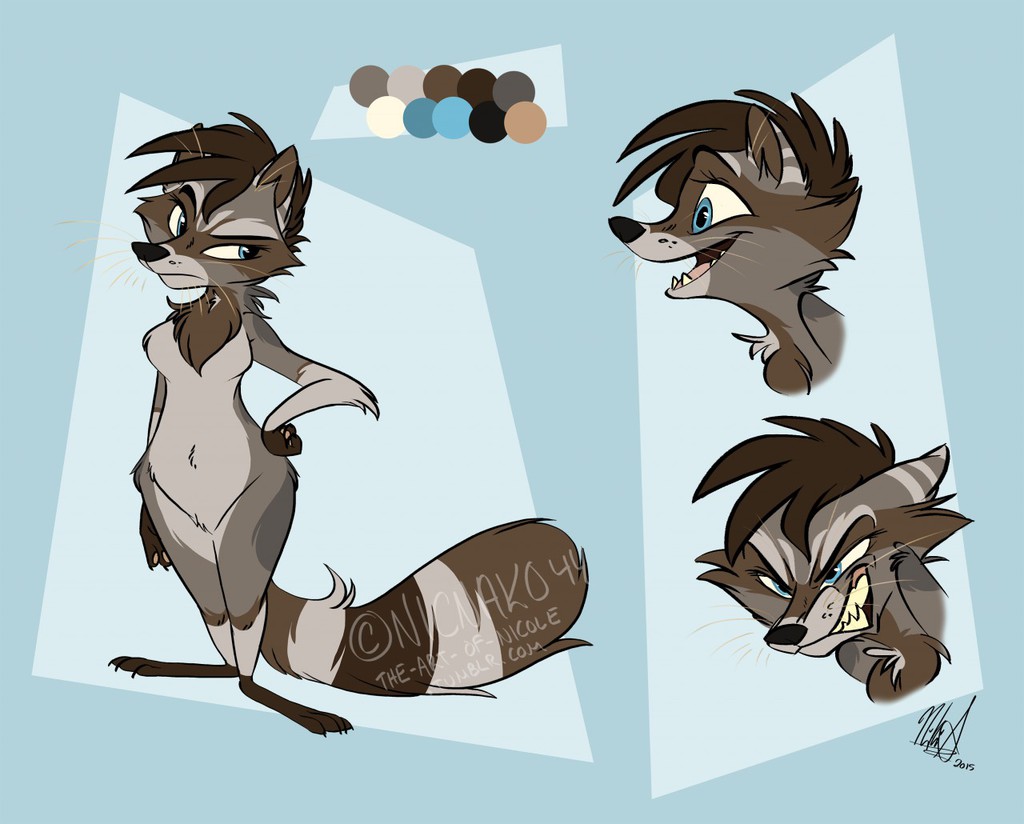
Introduction
Raccoons, known for their mischievous nature and distinctive markings, have become a popular character design concept in the world of art and entertainment. Artists and designers often utilize their unique features and behaviors to create captivating and endearing raccoon characters. In this article, we will explore the charm of raccoon character design concept art and its significance in various creative industries.

The Appeal of Raccoon Characters
Raccoons possess a range of characteristics that make them perfect candidates for character design. Their masked faces, ringed tails, and dexterous paws instantly grab attention and provide distinct visual appeal. Moreover, their adaptability, intelligence, and resourcefulness add depth and complexity to their personalities, making them intriguing subjects for storytelling.

Personifying Raccoons
When creating raccoon characters, artists often explore various anthropomorphic elements to enhance their relatability and charm. By imbuing raccoons with human-like qualities such as emotions, expressions, and clothing, these characters become more relatable to audiences. The process of personifying raccoons allows artists to craft unique and memorable personalities.

Expressive Facial Features
Raccoons have expressive eyes and facial features that artists can leverage to convey a wide range of emotions. Their large, bright eyes and distinctive masks provide a natural canvas for expressing joy, mischief, curiosity, or even sadness. These expressive features enable artists to create dynamic and emotive raccoon characters that resonate with viewers.

Playful and Clever Personalities
Raccoons are renowned for their playful and clever behaviors, which artists often emphasize in character design. By incorporating these traits, raccoon characters can showcase their problem-solving skills, mischievous nature, and knack for getting into humorous situations. Such personalities add depth and entertainment value to raccoon character designs.

Raccoon Characters in Various Media
Raccoon character design concept art finds its way into a plethora of media, including animation, video games, children's books, and merchandise. Animated films like "Over the Hedge" and video games like "Sly Cooper" have introduced beloved raccoon characters to wider audiences, further solidifying their popularity and appeal.

Inspiration from Nature
Artists often draw inspiration from real raccoons and their natural habitats when creating character designs. Studying raccoon anatomy, movements, and behaviors helps artists infuse authenticity into their art. Additionally, exploring diverse environments where raccoons thrive, such as forests and urban landscapes, can inspire unique backdrops for raccoon character stories.

Raccoon Character Design Techniques
Artists employ various techniques to bring raccoon characters to life. They experiment with different color palettes, textures, and styles to portray raccoon fur realistically or creatively. Incorporating elements like clothing, accessories, and props can further enhance the character's personality and story. The fusion of traditional and digital art tools enables artists to refine their designs and achieve desired visual effects.

Raccoon Characters in Storytelling
Raccoon characters often serve as protagonists or sidekicks in storytelling, captivating audiences of all ages. Their versatile personalities and relatable qualities make them suitable for a range of narratives, from adventurous tales in the wilderness to heartwarming stories set in urban settings. Through raccoon characters, storytellers can explore themes of friendship, resilience, and self-discovery.

Marketing Potential and Merchandising
The popularity of raccoon characters extends beyond storytelling. Their marketability and merchandising potential make them sought-after in the consumer products industry. Raccoon-themed merchandise like plush toys, apparel, and accessories attract fans of all ages, allowing them to express their affinity for these endearing characters.

Raccoon Characters and Education
Raccoon characters can also play a role in educational media and materials. Their adaptability and problem-solving skills make them suitable subjects for teaching children valuable life lessons and skills. Through engaging stories and interactive content, raccoon characters can inspire curiosity, creativity, and empathy in young learners.

Conclusion
Raccoon character design concept art continues to captivate audiences with its charm, relatability, and playful nature. The unique features and behaviors of raccoons serve as a foundation for creating endearing and memorable characters in various creative industries. Whether in animation, video games, or children's books, raccoon characters have proven their enduring appeal and ability to connect with audiences worldwide.